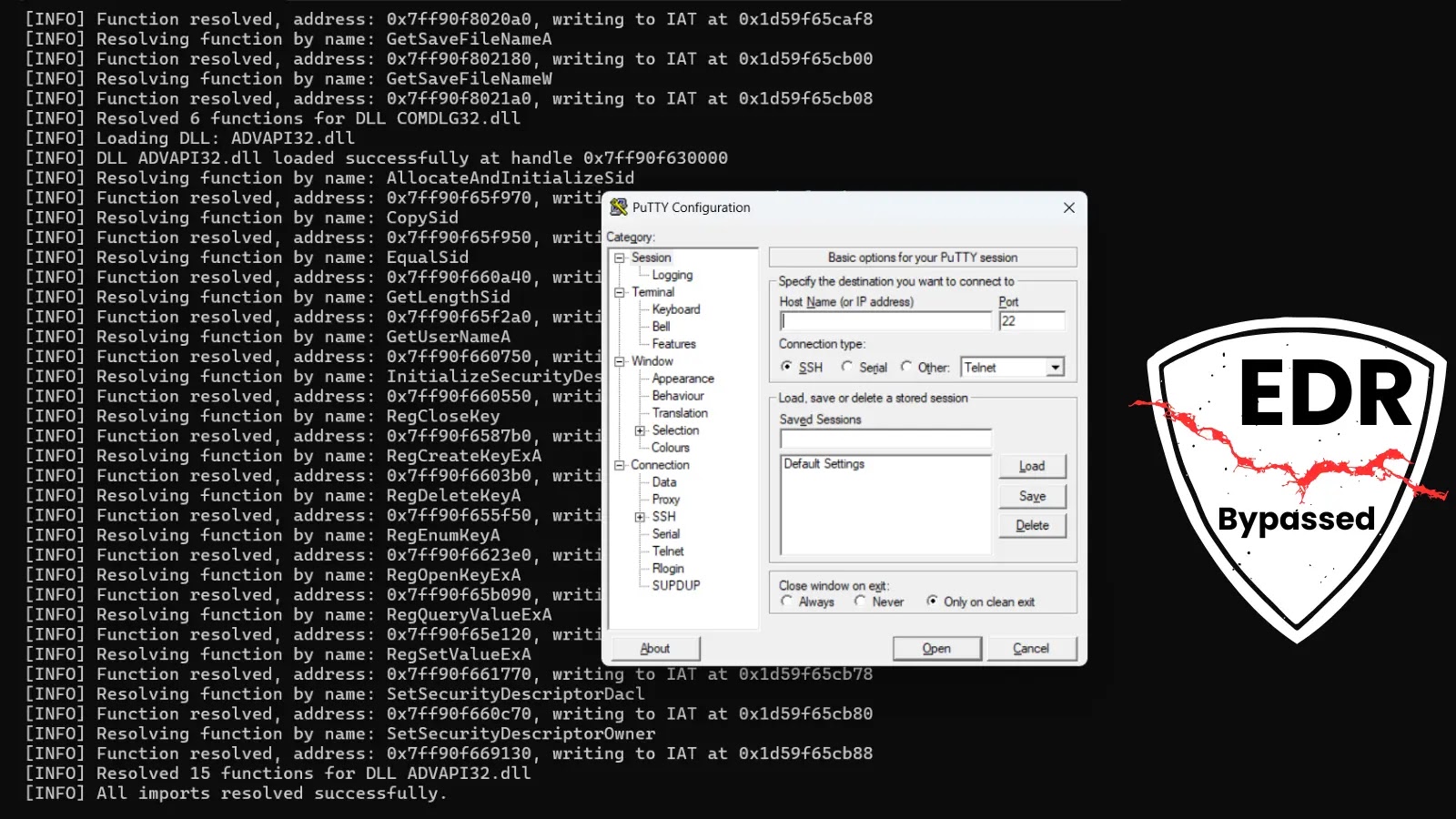
Hackers Can Bypass EDR by Downloading a Malicious File as an In-Memory PE Loader
The landscape of endpoint security is in a perpetual state of flux, with threat actors consistently developing novel methods to evade detection. A particularly concerning trend observed recently involves the escalating use of in-memory PE loaders. This sophisticated technique allows malicious code to execute directly within the memory space of a legitimate process, presenting a formidable challenge to even the most advanced Endpoint Detection and Response (EDR) solutions. Understanding this bypass mechanism is paramount for cybersecurity professionals striving to fortify their defenses against modern threats.
Understanding In-Memory PE Loaders and EDR Bypass
An in-memory Portable Executable (PE) loader operates by downloading a malicious file directly into a system’s memory, bypassing traditional disk-based security checks. Instead of writing the executable to disk, which would trigger file system monitoring and static analysis from EDRs, the attacker’s code loads and runs the malicious PE file entirely within RAM. This method exploits the trust placed in legitimate running processes. By injecting and executing the malicious payload within an already whitelisted or trusted process, the activities often appear benign to EDR systems that primarily focus on disk and process creation anomalies.
This technique is effective because EDR solutions primarily monitor disk writes, process creation events, and API calls associated with known malicious binaries. When a threat actor utilizes an in-memory PE loader, they circumvent these traditional detection points. The malicious code is never written to disk as a separate file, and its execution context is disguised within a legitimate process. This makes attribution and detection significantly more challenging, as the EDR might only observe regular activity from the trusted parent process.
How Threat Actors Leverage This Technique
Threat actors deploy in-memory PE loaders for various nefarious purposes, including:
- Persistent Access: Establishing a covert backdoor that resists detection by traditional antivirus scans.
- Data Exfiltration: Running specialized modules to steal sensitive information without leaving persistent file traces.
- Lateral Movement: Executing tools to explore the network and compromise additional systems from within a trusted process.
- Payload Delivery: Deploying second-stage malware, such as ransomware or highly evasive rootkits, that never touches the disk.
The core of this bypass lies in the ability to dynamically load and execute an arbitrary PE file from memory. This involves re-implementing significant portions of the operating system’s loader functionality within the malicious code itself. Specific memory allocation techniques, such as those related to the VirtualAllocEx API, are often abused to achieve this, allowing the attacker to dedicate a memory region for the malicious executable and then map it into the target process’s address space.
Remediation Actions Against In-Memory PE Loader Attacks
Mitigating the risk posed by in-memory PE loaders requires a multi-layered approach, focusing on enhancing visibility and strengthening behavioral analysis capabilities.
- Enhanced Memory Forensics: Invest in EDR solutions that offer robust memory scanning and forensic capabilities. These tools should be able to analyze process memory for suspicious foreign code injections or abnormal execution patterns.
- Behavioral Analysis and Anomaly Detection: Focus on EDRs that excel at detecting unusual process behavior, not just known malicious file signatures. Look for indicators like unexpected network connections from a normally benign process, unusual child process creation, or API call sequences that deviate from the norm.
- Application Whitelisting: Strictly control what applications are allowed to run on endpoints. While not a direct counter to in-memory execution within a trusted process, it reduces the initial infection vector.
- Reduced Privileges (Least Privilege Principle): Operate user accounts and applications with the absolute minimum necessary privileges. This limits the potential impact of a successful injection attack within a compromised process.
- Regular Security Awareness Training: Educate users about phishing and social engineering tactics, as these are often the initial entry points for attackers.
- Patch Management: Keep operating systems, applications, and EDR solutions fully patched. Vulnerabilities in legitimate software can be exploited to gain initial access before deploying in-memory techniques. For example, any unpatched vulnerability, such as those recently discovered and assigned a CVE, could be exploited. While not specific to this technique, maintaining a rigorous patching schedule, including awareness of critical CVEs like a hypothetical CVE-2023-XXXXX (if one were directly related), is crucial.
Recommended Tools for Detection and Mitigation
Employing specialized tools can significantly aid in detecting and responding to in-memory PE loader attacks.
| Tool Name | Purpose | Link |
|---|---|---|
| Volatility Framework | Open-source memory forensics framework for extracting digital artifacts from volatile memory (RAM) samples. Excellent for post-incident analysis. | https://www.volatilityfoundation.org/ |
| Sysmon | Windows system service and device driver that, once installed on a system, remains resident across system reboots to monitor and log system activity to the Windows event log. Configurable to detect process memory access and create custom rules. | https://docs.microsoft.com/en-us/sysinternals/downloads/sysmon |
| Process Explorer | Advanced task manager that shows live information about what processes are running, what DLLs they have loaded, and what handles they have open. Can sometimes reveal injected code. | https://docs.microsoft.com/en-us/sysinternals/downloads/procmon |
| Osquery | Open-source tool that exposes an operating system as a high-performance relational database. Allows you to write SQL queries to explore OS data, including process memory regions and loaded modules. | https://osquery.io/ |
Conclusion
The evolution of attacker techniques, particularly the use of in-memory PE loaders, underscores the continuous need for advanced security strategies. Relying solely on signature-based detection or traditional disk-based monitoring is no longer sufficient. Organizations must prioritize EDR solutions with sophisticated behavioral analysis, memory forensics, and robust anomaly detection capabilities. By understanding how these bypasses work and implementing comprehensive remediation actions, security teams can significantly enhance their defenses against these increasingly prevalent and stealthy threats, ultimately protecting critical assets and data.





